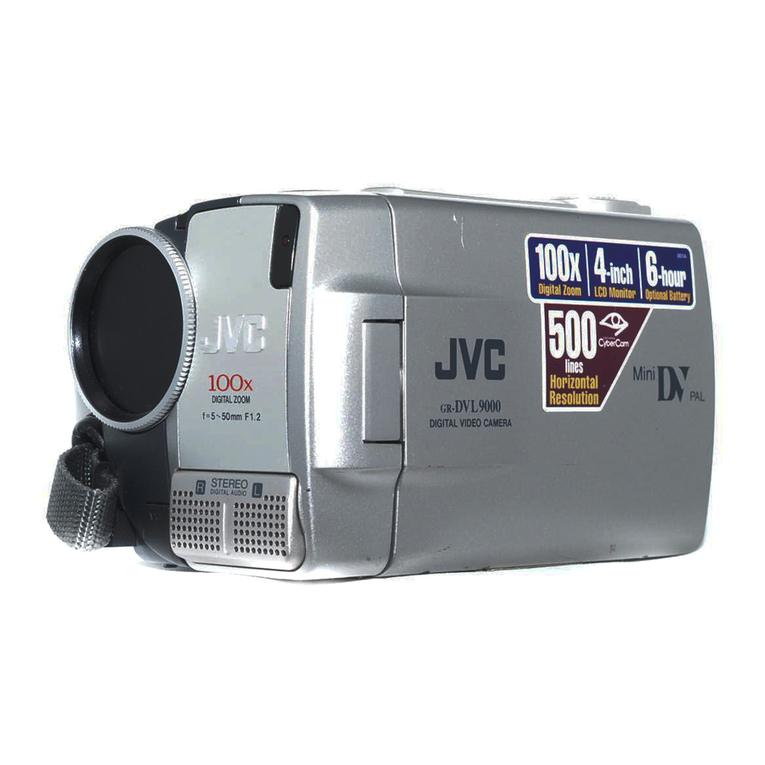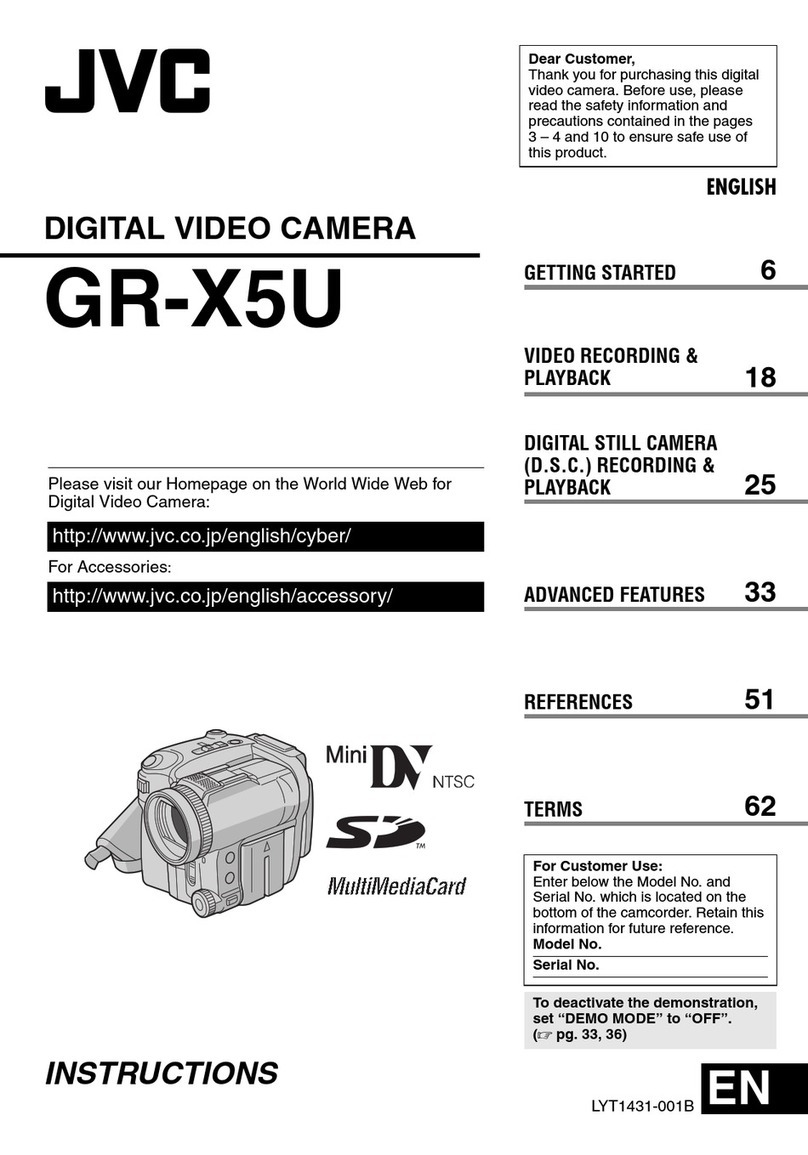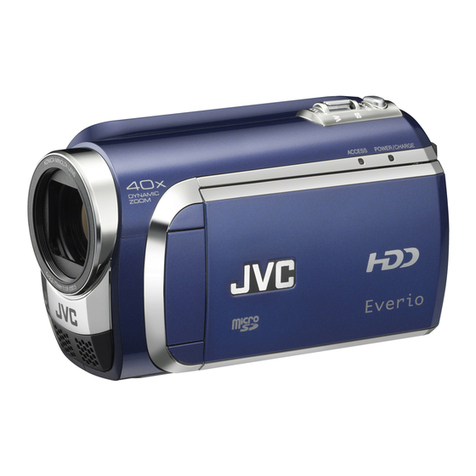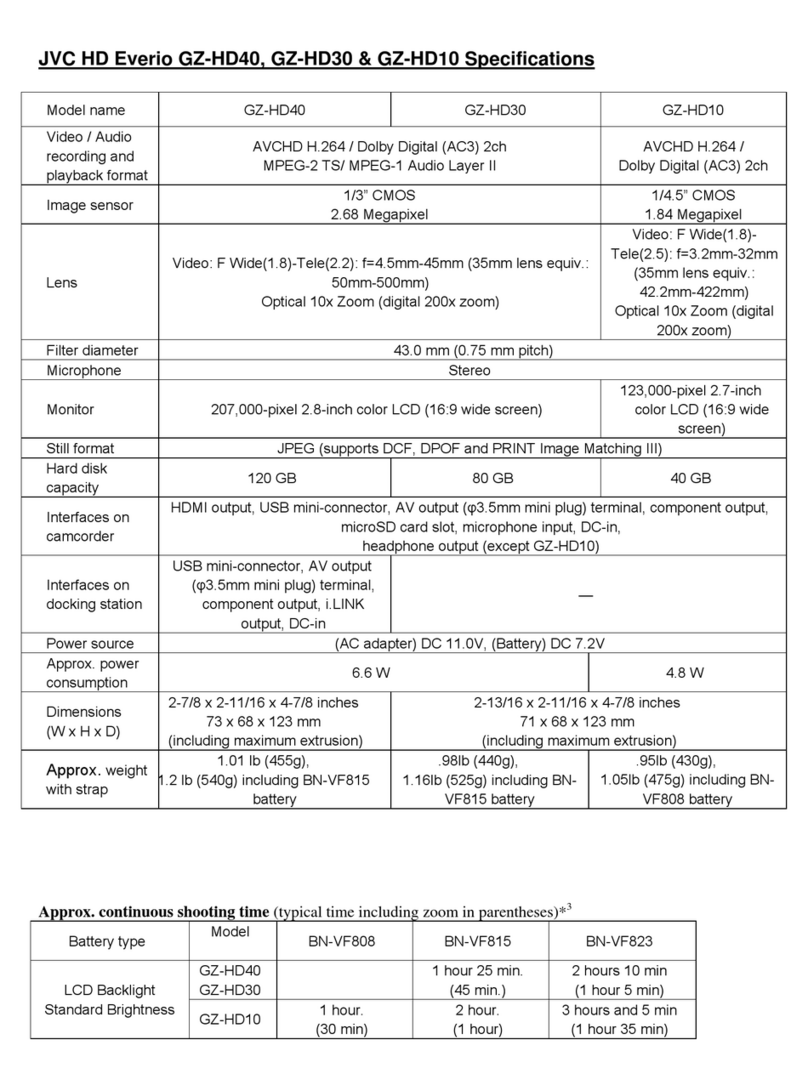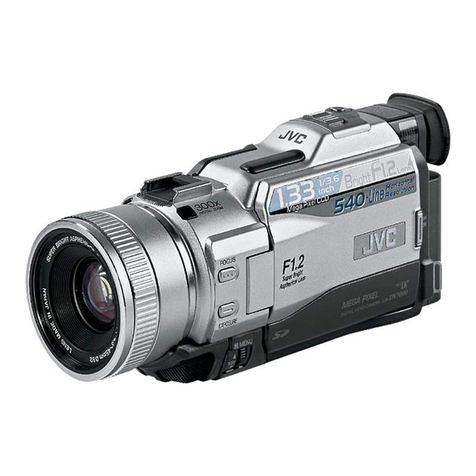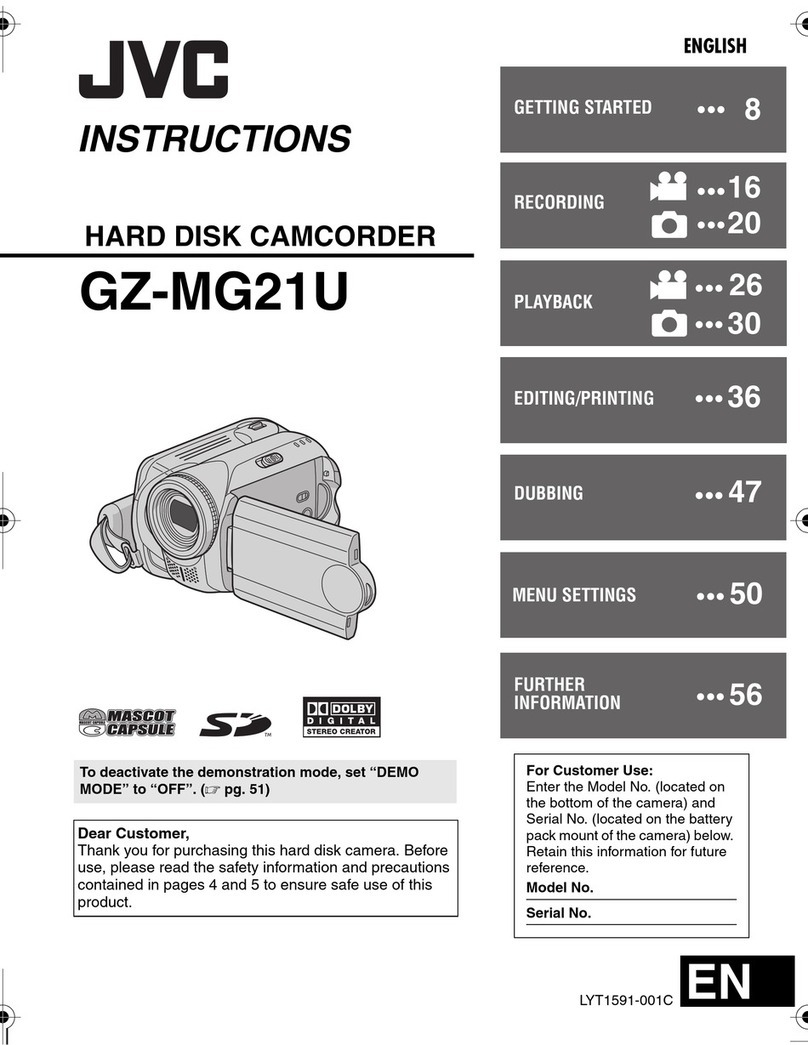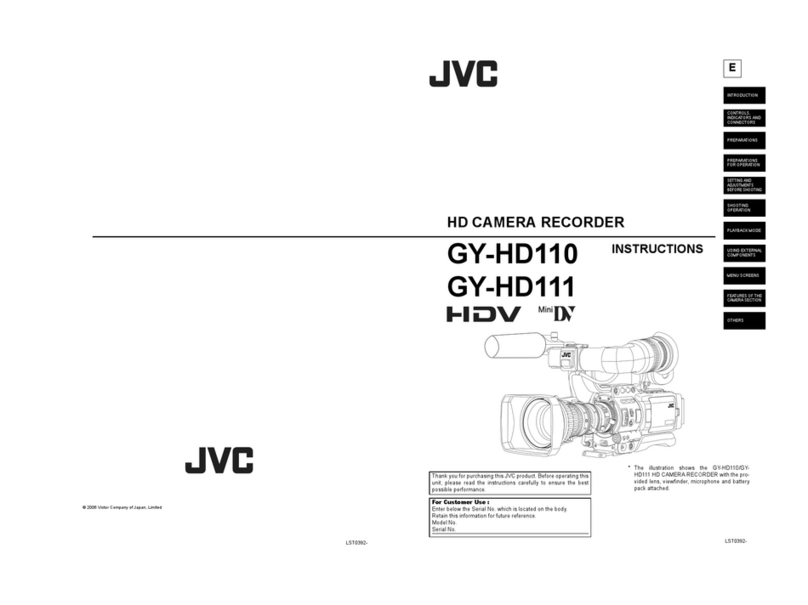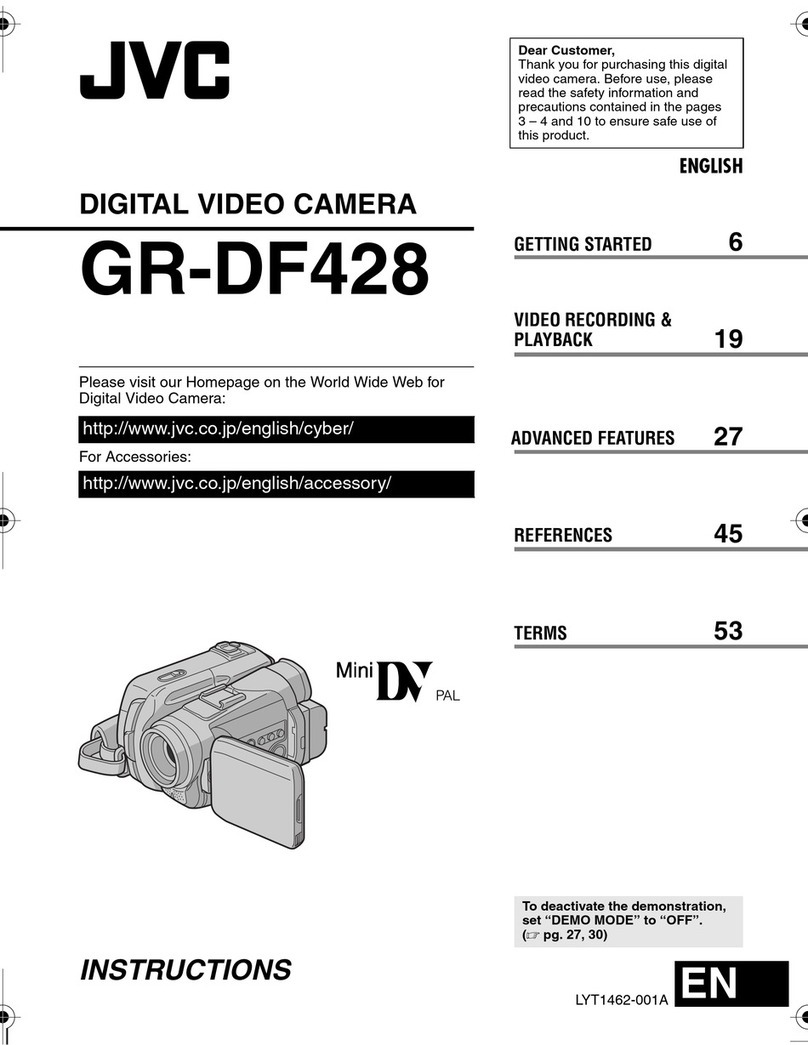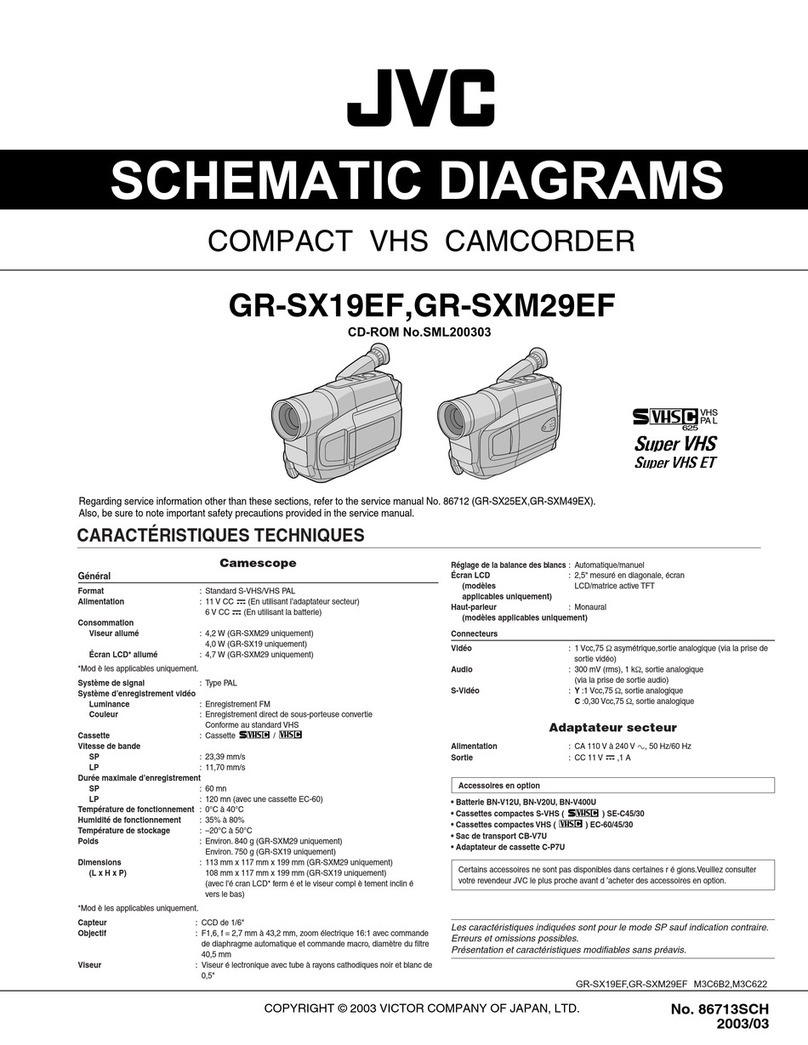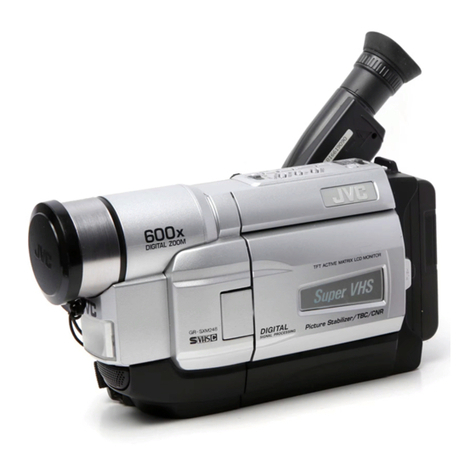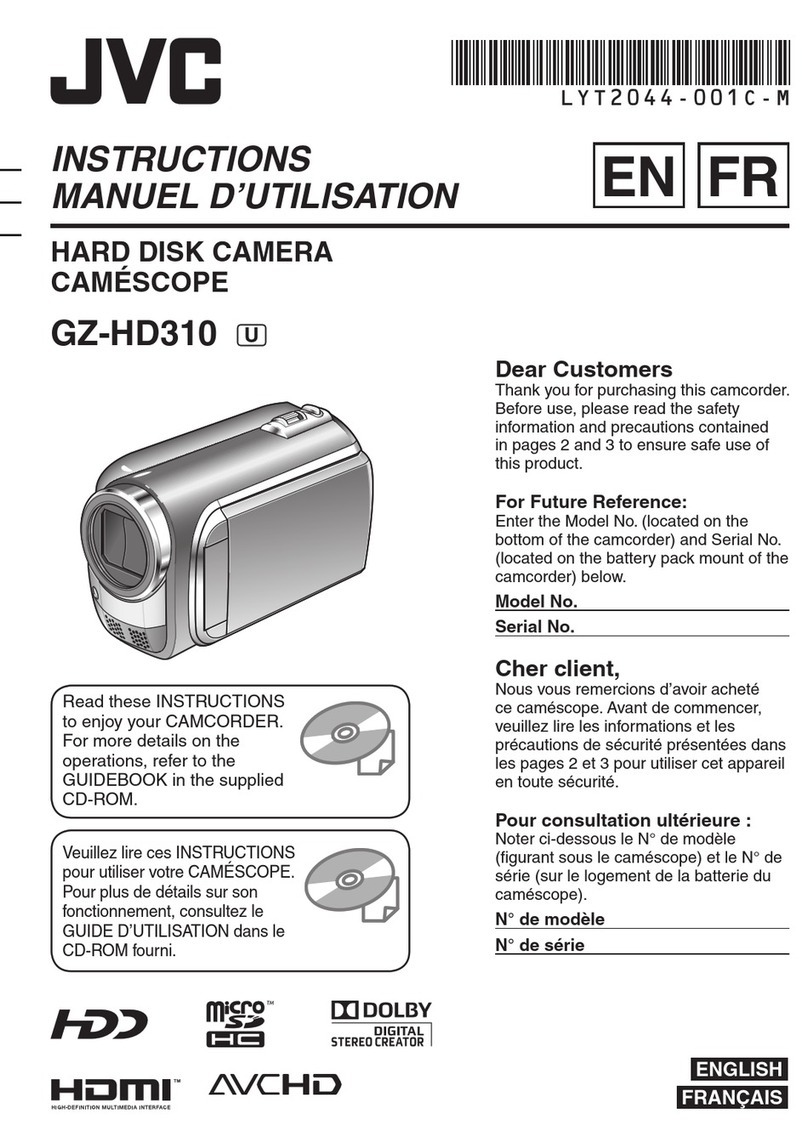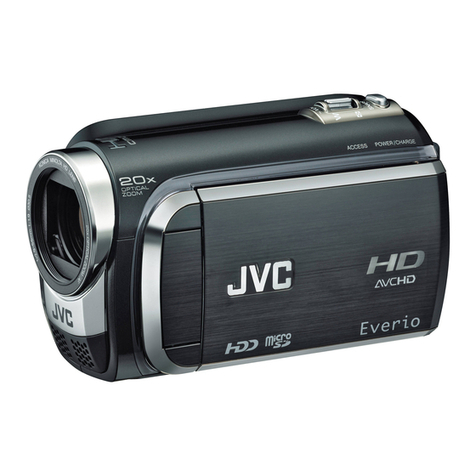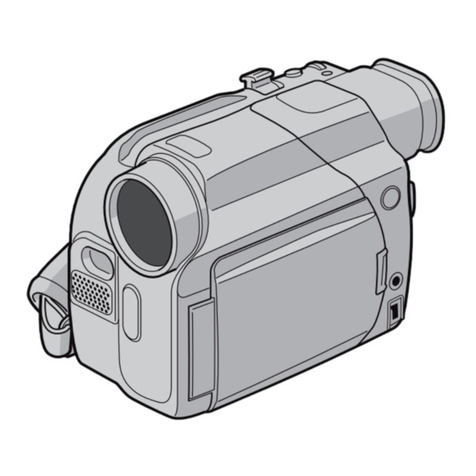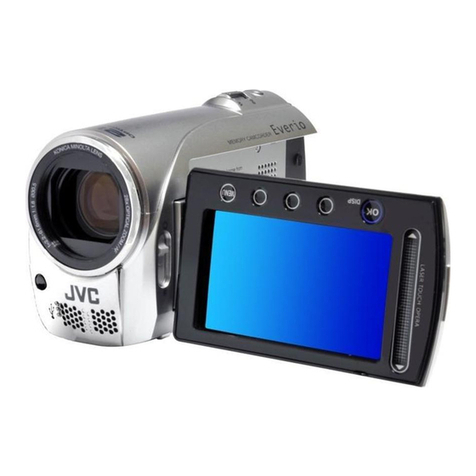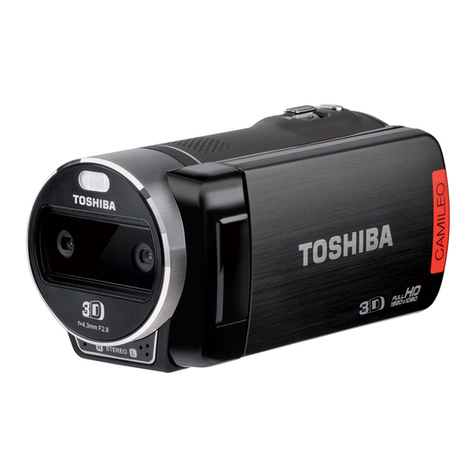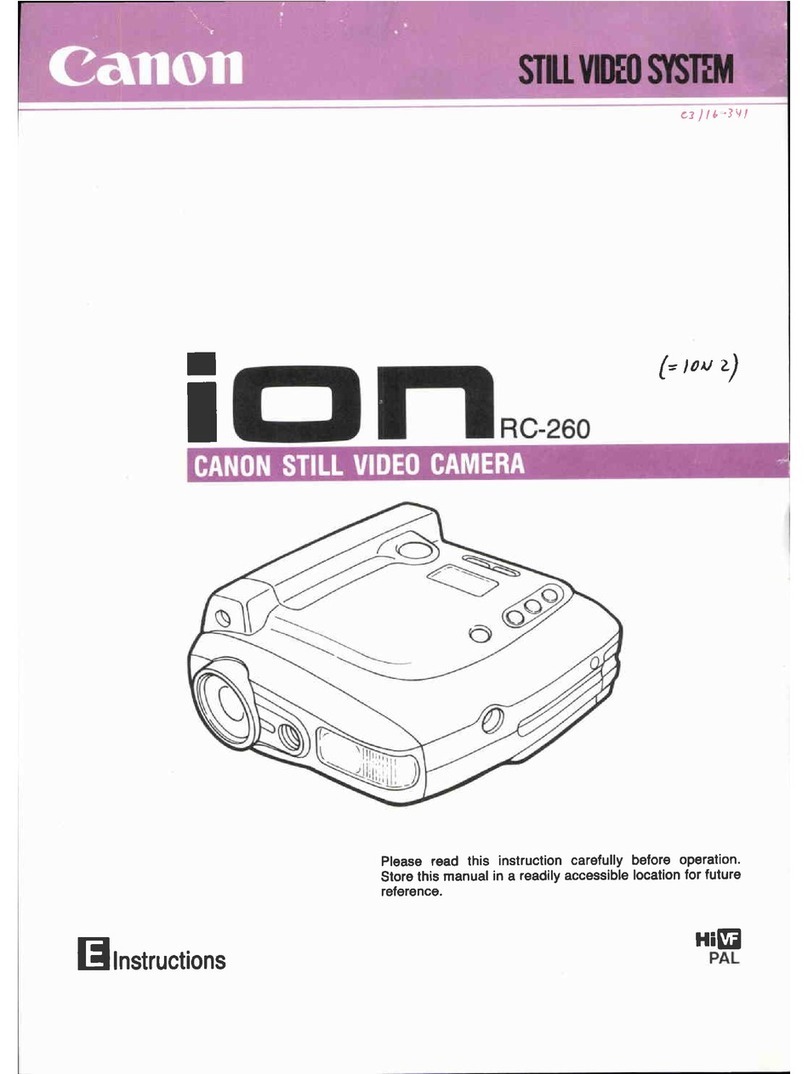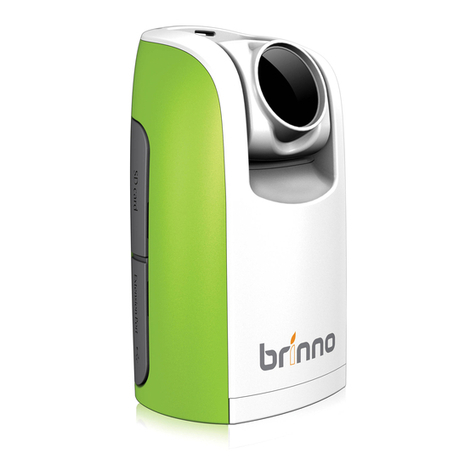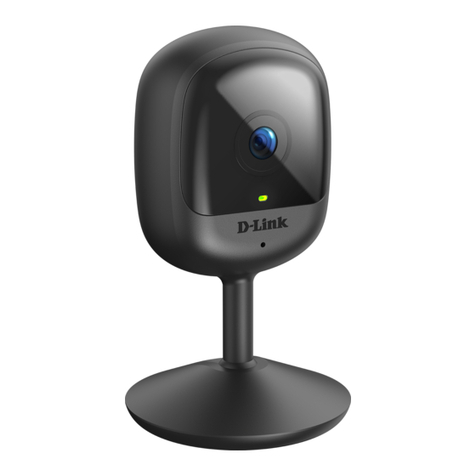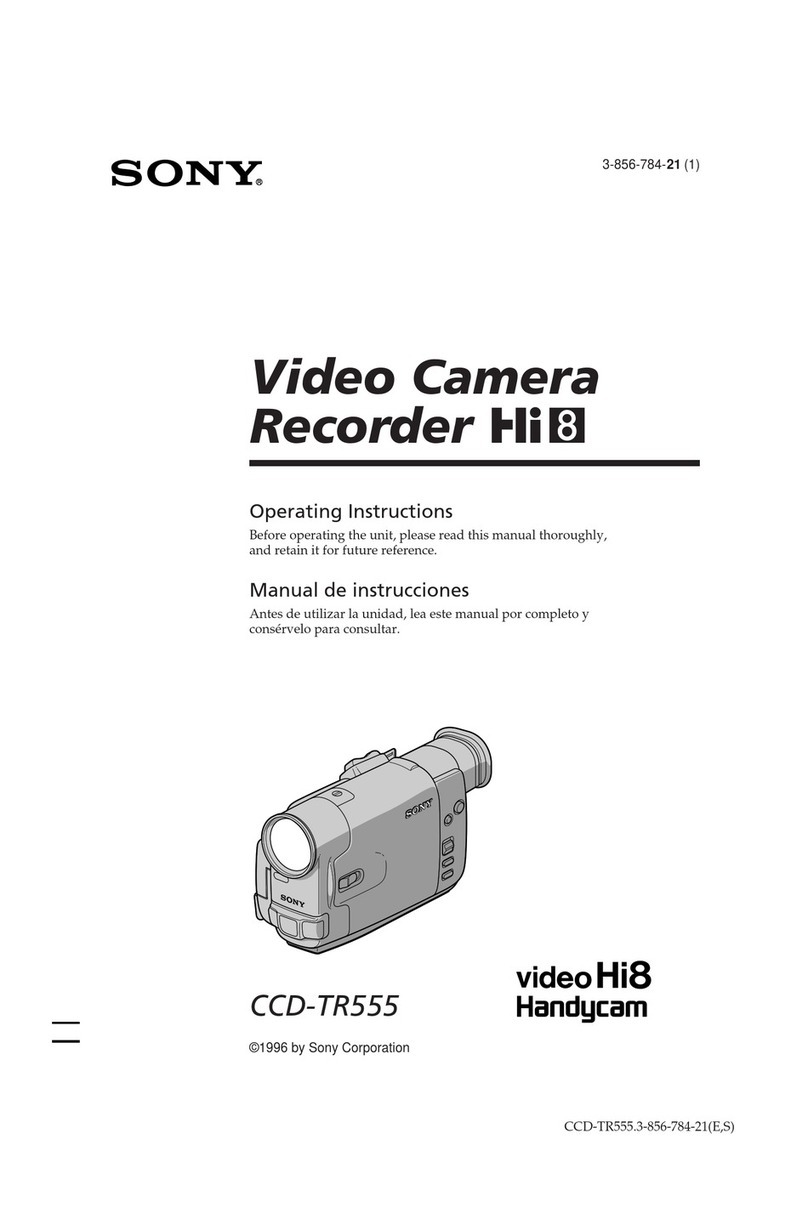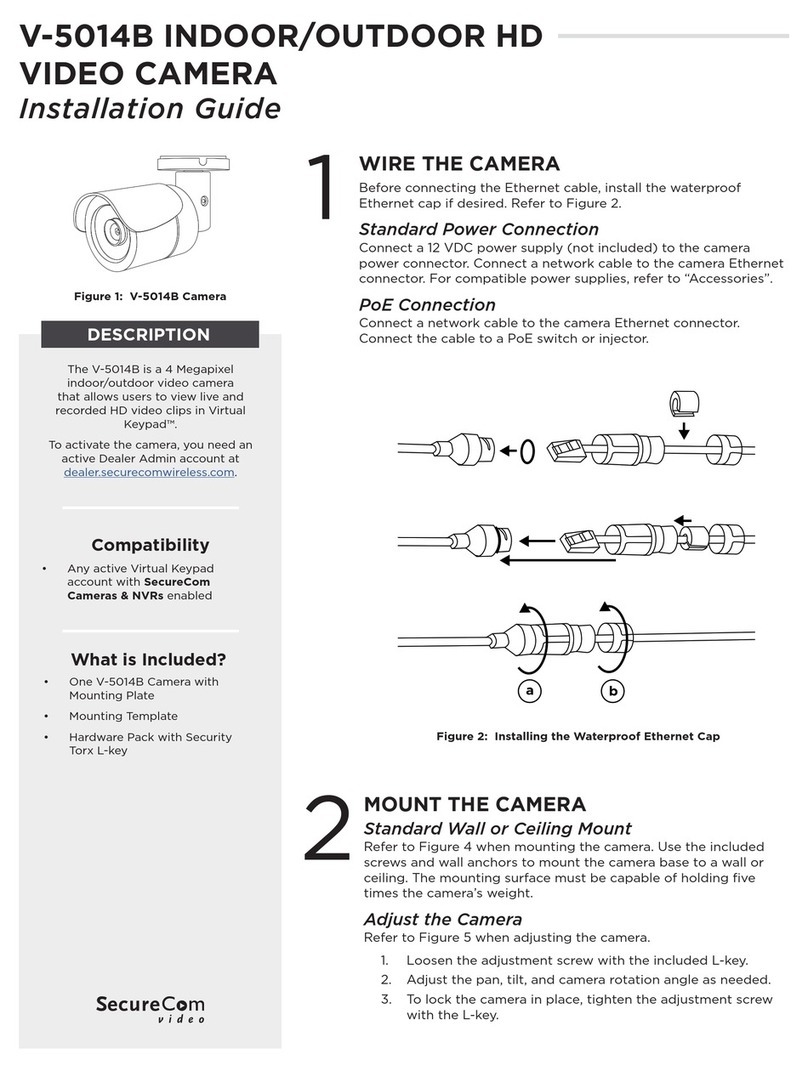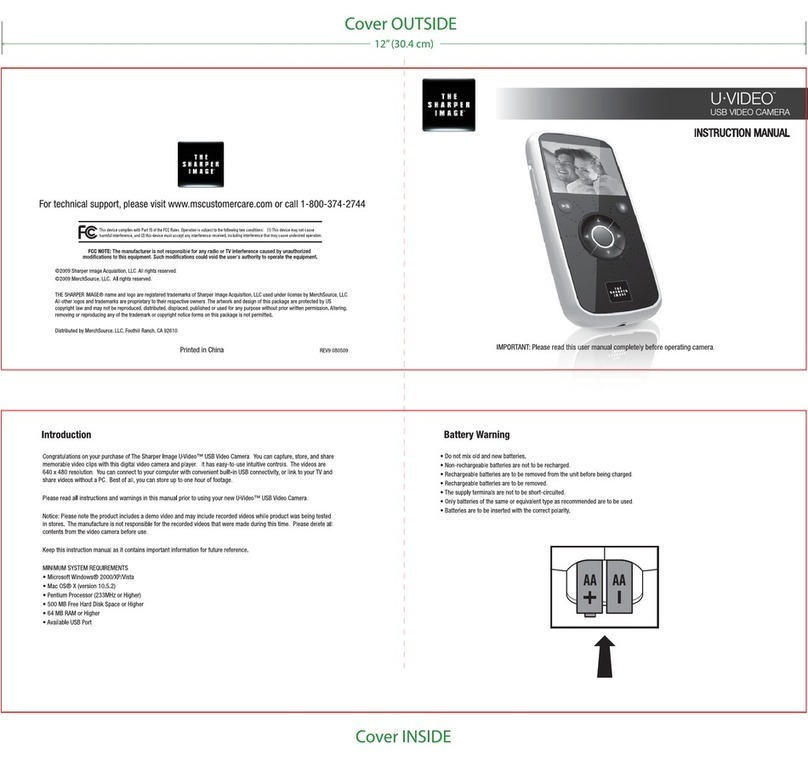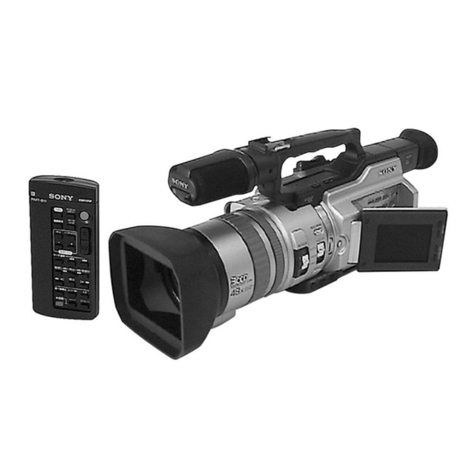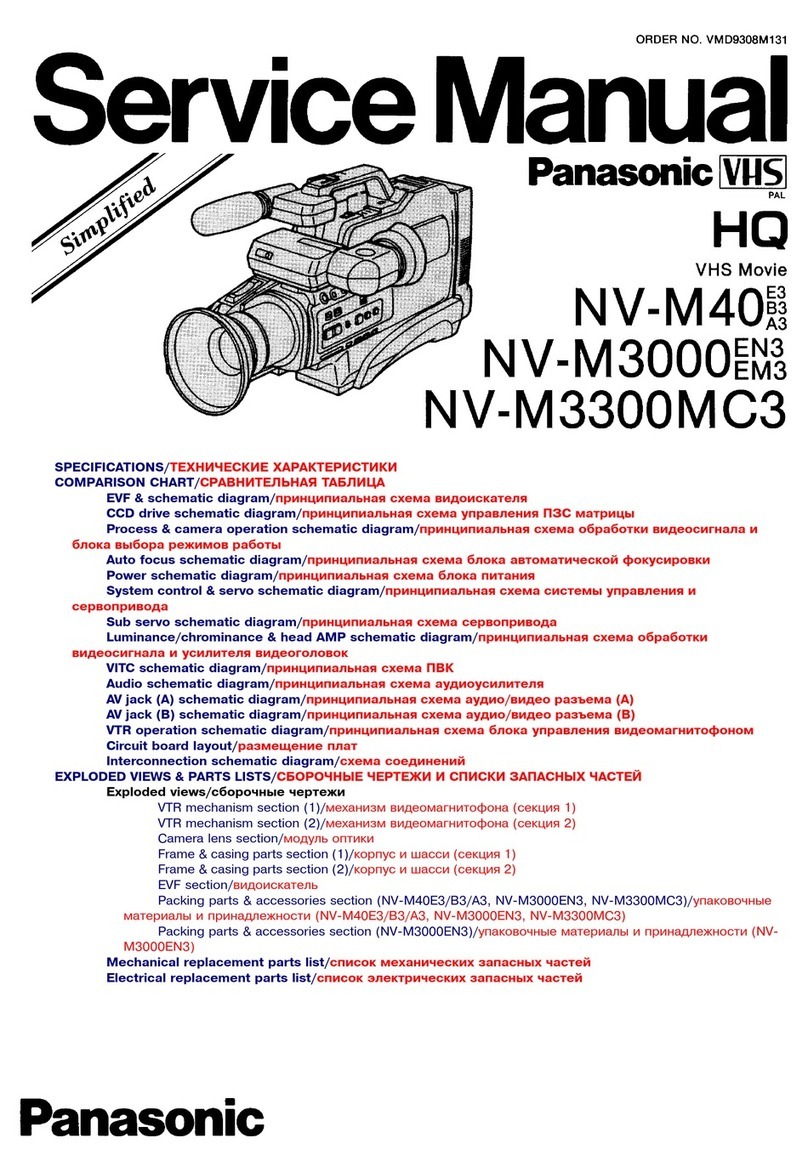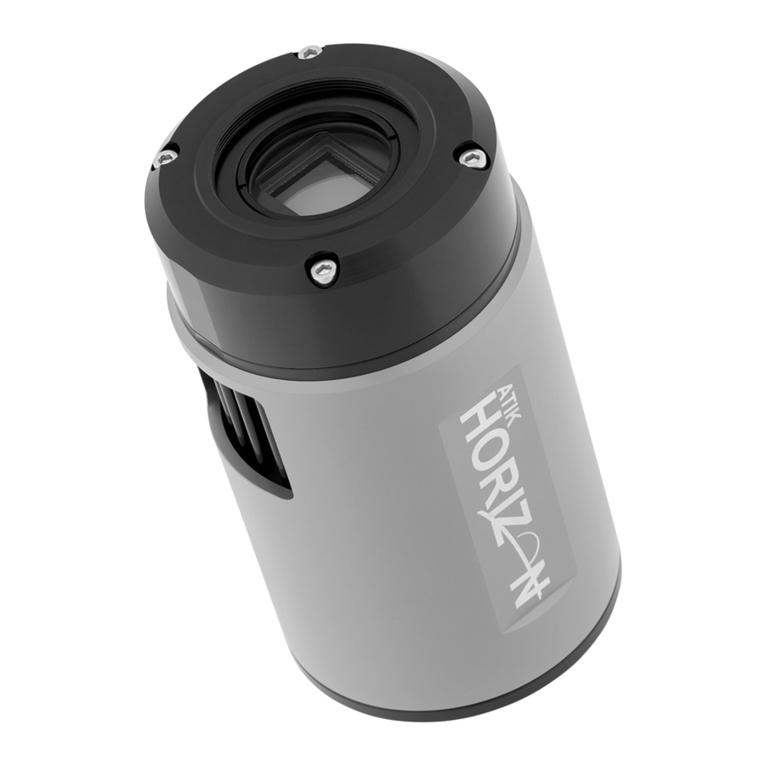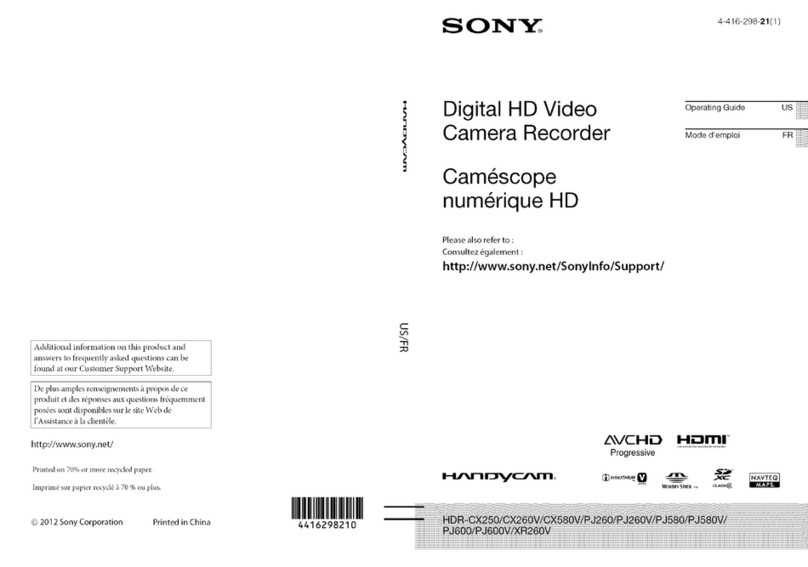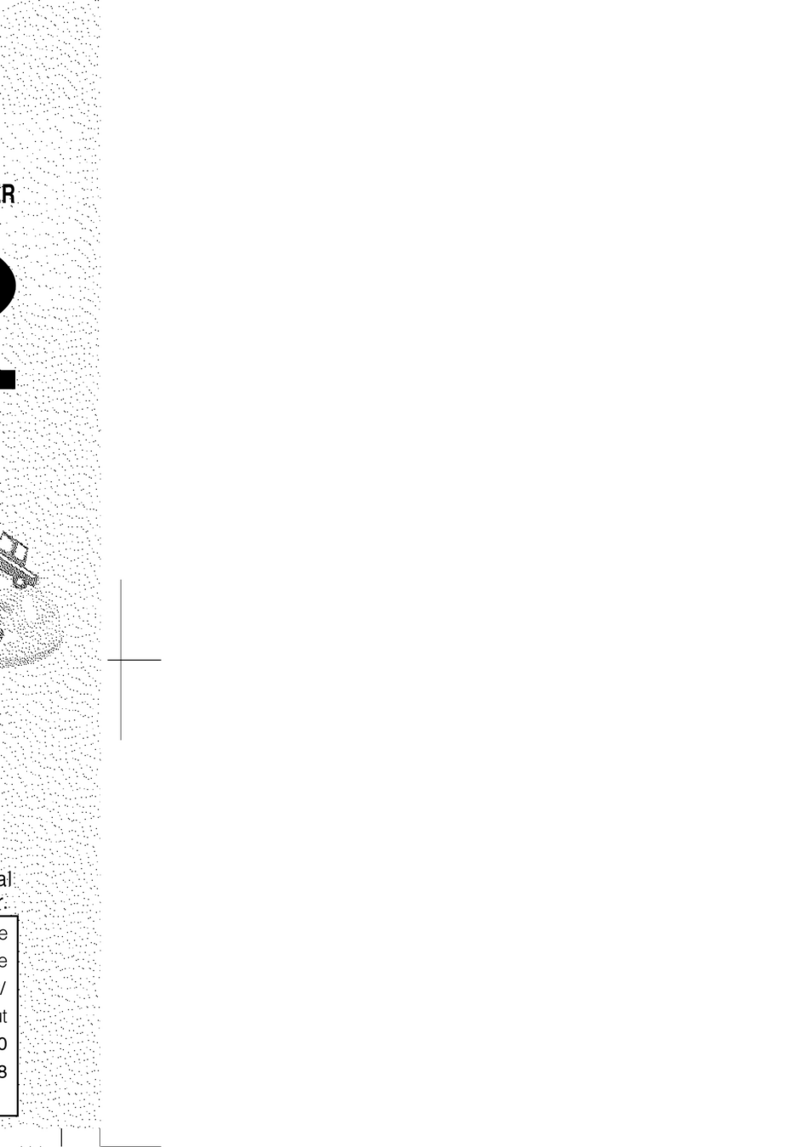
SERVICE MANUAL
COPYRIGHT © 2003 VICTOR COMPANY OF JAPAN, LTD. No.86730
2003/04
DIGITAL VIDEO CAMERA
86730200304
GR-D20EK,GR-D20E
X
,GR-D20E
Y
,GR-D20E
Z
,GR-D21EK,
GR-D40EK,GR-D40E
X
,GR-D40E
Y
,GR-D40E
Z
SPECIFICATION
Camcorder
General
Digital Video Camera
Connectors
AC Adapter
For disassembling and assembling of MECHANISM ASSEMBLY, refer to the SERVICE MANUAL No.86700 (MECHANISM ASSEMBLY).
PAL
Power supply : DC 11.0 V (Using AC Adapter)
DC 7.2 V (Using battery pack)
Power consumption
LCD monitor off, viewfinder on : Approx. 3.4 W
LCD monitor on, viewfinder off: Approx. 4.7 W
Dimensions (W x H x D) : 69 mm x 94 mm x 143 mm
(with the LCD monitor closed and the viewfinder pushed
back in)
Weight : Approx. 525 g
Operating temperature : 0°C to 40°C
Operating humidity : 35% to 80%
Storage temperature : -20°C to 50°C
Pickup : 1/6" CCD
Lens : F 1.6, f = 2.7 mm to 43.2 mm, 16:1 power zoom lens
Filter diameter : Ø37 mm
LCD monitor : 2.5" diagonally measured, LCD panel/TFT active
matrix system
Viewfinder : Electronic viewfinder with 0.24" black/white LCD
Speaker : Monaural
Format : DV format (SD mode)
Signal format : PAL standard
Recording/Playback format : Video: Digital component recording
: Audio: PCM digital recording,
32 kHz 4-channel (12-bit),
48 kHz 2-channel (16-bit)
Cassette : Mini DV cassette
Tape speed : SP : 18.8 mm/s
LP : 12.5 mm/s
Maximum recording time : SP : 80 min.
(using 80 min. cassette) LP : 120 min.
S-Video
Output : Y : 1 V (p-p), 75 Ω, analogue
C : 0.29 V (p-p), 75 Ω, analogue
Input* : Y : 0.8 V (p-p) -1.2 V (p-p), 75 Ω, analogue
C : 0.2 V (p-p) -0.4 V (p-p), 75 Ω, analogue
AV
Video output : 1 V (p-p), 75 Ω, analogue
Video input* : 0.8 V (p-p) -1.2 V (p-p), 75 Ω, analogue
Audio output : 300 mV (rms), 1 kΩ, analogue, stereo
Audio input* : 300 mV (rms), 50 kΩ, analogue, stereo
DV
Output : 4-pin, IEEE 1394 compliant
Input* : 4-pin, IEEE 1394 compliant
USB** :5-pin
EDIT Ø3.5 mm, 2-pole
* GR-D50/D30 only
** GR-D50/D40 only
Power requirement AC 110 V to 240 V ~, 50 Hz/60 Hz
Output : DC 11 V , 1 A
Specifications shown are for SP mode unless otherwise indicated. E & O.E. Design and specifications subject
to change without notice.
GR-D20EK,GR-D20EX,GR-D20EY,GR-D20EZ,GR-D21EK,GR-D40EK,GR-D40EX,GR-D40EY,GR-D40EZ M3D122,M3D124
